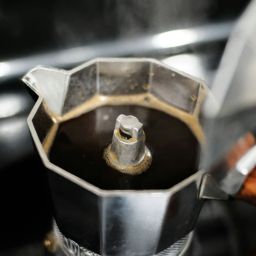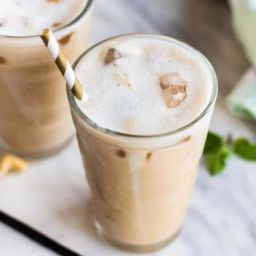
Ever wondered about that rich, aromatic brew known as Moka? Let’s dive into its fascinating history and origin. Moka isn’t just your average cup of joe. Originating from Yemen and spreading across the Arabian Peninsula, Moka has been warming cups and hearts for centuries. It’s named after the port city of Mocha in Yemen, a major coffee trade center in the past.
Types and Varieties of Moka
Moka comes in a kaleidoscope of styles and flavors, each with its own regional twist. Let’s explore:
- Ethiopian Moka: Known for its wine-like and fruity characteristics.
- Yemeni Moka: Offers a rich, chocolaty flavor with a hint of spice.
- Indonesian Moka: Typically earthy and intense, with a full body.
Each variety of Moka brings its own unique blend and flavor profile, making the Moka experience incredibly diverse. Popular blends often mix beans from different regions, creating a symphony of flavors that can range from sweet and light to dark and robust.
The Making of Moka
Making Moka is an art in itself. Here’s a peek into the detailed process:
- Selecting the Beans: The journey begins with choosing high-quality Moka beans. Look for beans that are freshly roasted to ensure the best flavor.
- Grinding the Beans: Grind the beans to a fine consistency, similar to that used for espresso. This is crucial for extracting the full flavor.
- The Moka Pot: The iconic Moka pot, also known as a stovetop espresso maker, is the traditional tool for brewing. It’s a nifty little device made of three parts: the bottom chamber for water, the middle for ground coffee, and the top where the brewed coffee ends up.
- Brewing the Coffee: Fill the bottom chamber with water and the middle filter with your ground coffee. Heat it on the stove. As the water boils, it creates pressure that pushes the water through the coffee grounds and into the top chamber. This is where the magic happens!
- The Perfect Brew: Once you hear a hissing sound, it means your Moka is ready. The entire process takes about 5 minutes, but the result is a pot of rich, aromatic coffee that’s sure to kickstart your day.
Remember, the key to a great Moka is in the details: the quality of the beans, the grind size, and the brewing time. Experiment with these elements to find your perfect cup!
Moka in Culture and Society
Alright, let’s chat about Moka’s place in the world beyond just being a tasty brew. Moka isn’t just coffee; it’s a cultural icon.
- A Symbol of Hospitality: In many Middle Eastern cultures, serving Moka is a sign of respect and hospitality. It’s more than just a drink; it’s a way to welcome guests and gather people together.
- Ceremonial Brew: In some regions, preparing and serving Moka is a ceremonial affair, often accompanied by traditional music and attire.
- A Daily Ritual: For many, Moka is a daily ritual, a moment to pause and enjoy the simpler things in life. It’s about savoring the flavor and taking a break from the hustle and bustle.
Moka’s role in various cultures underscores its importance as a social beverage, steeped in tradition and shared experiences. It’s not just about caffeine; it’s about community.
Comparing Moka with Other Coffee Types
Now, let’s see how Moka stands out in the crowded world of coffee.
- Moka vs. Espresso: Both are strong, but Moka is typically less concentrated than espresso. While espresso is made using high-pressure machines, Moka is brewed with a stovetop pot, giving it a different texture and flavor profile.
- Moka vs. Drip Coffee: Drip coffee is generally lighter and more watery compared to the bold and robust flavor of Moka. The brewing method for drip coffee allows for a more subtle flavor extraction, while Moka’s method results in a stronger brew.
- Taste: Moka has a unique taste – it’s rich, intense, and sometimes has a slight bitterness, which coffee aficionados love. It’s a full-bodied experience that’s quite different from other brewing methods.
- Preparation: Preparing Moka is a more hands-on process compared to the automated drip machines. It requires attention to detail, from grinding the beans to monitoring the stove.
- Consumption: Moka is often enjoyed in small quantities due to its strength. It’s a coffee to be sipped and savored, often without milk or sugar to appreciate its true flavor.
In essence, Moka is for those who love a strong, flavorful cup of coffee and enjoy the ritual of brewing. It’s a unique experience, different from other coffee types in taste, preparation, and the way it’s enjoyed.
Health Benefits and Considerations
Let’s spill the beans on the health side of Moka. Like any coffee, Moka comes with its share of perks and points to ponder.
- Antioxidants Galore: Moka is packed with antioxidants, which are great for fighting off those pesky free radicals. This means it’s not just a wake-up call for your brain but also a little shield for your cells.
- Boosts Your Brainpower: A cup of Moka can sharpen your focus and improve concentration. It’s like a little cheat code for your brain.
- Watch the Caffeine: Now, Moka is strong. That means it’s also high in caffeine. So, if you’re sensitive to caffeine or have certain health conditions, you might want to monitor your intake.
- Hydration is Key: Remember, coffee can be dehydrating. Balance your Moka moments with plenty of water to stay hydrated.
In short, Moka can be a healthy choice if enjoyed in moderation. Just keep an eye on the caffeine and stay hydrated!
Home Preparation of Moka
Ready to brew some Moka at home? Here’s a beginner-friendly guide to get you started:
- Gather Your Gear: You’ll need a Moka pot, freshly ground coffee (fine, but not too fine), and water.
- Fill the Bottom Chamber: Pour water into the bottom chamber of your Moka pot, just below the safety valve.
- Add the Coffee: Fill the filter basket with your ground coffee. Don’t tamp it down – just level it off.
- Assemble the Pot: Screw the top and bottom parts of the pot together. Make sure it’s tight to prevent steam from escaping.
- Heat It Up: Place the pot on a stove over medium heat. Too hot, and you’ll burn the coffee; too cool, and it won’t brew properly.
- Listen for the Gurgling Sound: When you hear a gurgling sound, it means your coffee is ready. Remove the pot from the heat immediately to prevent burning.
- Serve and Enjoy: Pour your freshly brewed Moka into a cup. It’s best enjoyed hot, right after brewing.
Tips for Beginners:
- Experiment with the amount of coffee and water to find your perfect brew.
- Keep the heat medium to avoid burning the
coffee.
- If the coffee tastes too bitter, try a coarser grind or lower the heat.
- Cleaning your Moka pot after each use is crucial for maintaining its longevity and flavor quality.
Brewing Moka at home is a delightful experience. It’s not just about making coffee; it’s about embracing a rich tradition and savoring every sip. So, take your time, enjoy the process, and welcome to the wonderful world of Moka!
Storing and Preserving Moka
Got some Moka and want to keep it fresh as long as possible? Here’s how to store your precious beans or grounds:
- Airtight Containers: Oxygen is coffee’s enemy. Store your Moka in an airtight container to keep it fresh.
- Cool and Dark Place: Keep your container in a cool, dark place. Light and heat can mess with the flavor.
- Avoid the Fridge: Contrary to popular belief, the fridge isn’t a great place for coffee. It can cause condensation and affect the taste.
- Freezing for Long-Term: If you’ve got a lot of Moka and want to store it long-term, freezing is an option. Just make sure it’s in a completely airtight container.
Remember, fresh is best when it comes to coffee. So, try to buy in amounts you can use within a couple of weeks.
Moka Recipes and Serving Suggestions
Moka is versatile and can be enjoyed in many creative ways. Here are some ideas to spice up your Moka game:
- Classic Moka: Enjoy it straight from the pot. It’s strong, rich, and full of flavor.
- Moka Latte: Mix your Moka with steamed milk for a creamy, smooth latte. Add a bit of sugar if you like it sweet.
- Iced Moka: Pour your brewed Moka over ice and add milk for a refreshing summer drink.
- Moka Affogato: Pour hot Moka over a scoop of vanilla ice cream for a delicious dessert.
- Moka Martini: Mix brewed Moka with vodka and coffee liqueur for a sophisticated cocktail.
Food Pairings:
- With Breakfast: Pair your morning Moka with pastries or a hearty breakfast sandwich.
- After Dinner: Serve Moka with dark chocolate or a slice of cheesecake.
- Special Occasions: Impress your guests by serving Moka with small desserts or gourmet chocolates.
Moka is more than just a coffee; it’s a culinary adventure. Whether you’re sipping it solo or pairing it with food, there’s a Moka style for every occasion.
FAQs
What is Moka?
Moka is more than just a type of coffee; it’s a brewing method with a rich history. Originating in Yemen, it’s named after the port city of Mocha. Moka is known for its strong, rich flavor, and it’s made using a special stovetop pot called a Moka pot.
How is Moka made?
To make Moka, you need a Moka pot, water, and finely ground coffee. Water goes in the bottom chamber, coffee in the middle, and as it heats up, the brewed coffee ends up in the top chamber. It’s a unique process that results in a bold and concentrated brew.
What are the different types of Moka?
- Ethiopian Moka: Fruity and wine-like.
- Yemeni Moka: Rich and chocolaty.
- Indonesian Moka: Earthy and intense.
Where is Moka most popular?
Moka is hugely popular in the Middle East, particularly in Yemen and Ethiopia. It’s also enjoyed by coffee aficionados worldwide who appreciate its strong, unique flavor.
How does Moka differ from regular coffee?
Moka is stronger and more concentrated than regular drip coffee. It’s brewed under pressure, similar to espresso, but with a distinct taste and brewing method.
Can Moka be made at home?
Absolutely! All you need is a Moka pot, some coffee, and a bit of practice. It’s a fun and rewarding way to make coffee at home.
What are the health benefits of Moka?
Moka, like other types of coffee, is rich in antioxidants. It can boost brain function and improve focus, but remember, it’s also high in caffeine.
How to store and preserve Moka?
Store your Moka beans or grounds in an airtight container in a cool, dark place. Avoid the fridge, but you can freeze it for long-term storage.
What are the best Moka recipes?
- Moka Latte: Moka with steamed milk.
- Iced Moka: Chilled Moka over ice with milk.
- Moka Affogato: Moka poured over vanilla ice cream.
Where to buy authentic Moka?
Look for specialty coffee shops or online retailers that sell single-origin coffee from Yemen or Ethiopia for authentic Moka.
Read more about How to Store Coffee.
Conclusion
From its rich history and unique brewing method to the various ways you can enjoy it, Moka is more than just a coffee; it’s a cultural experience. Whether you’re brewing it at home or enjoying a cup at your local café, Moka offers a distinctive taste that’s both bold and satisfying. Remember, the key to great Moka is in the details – the quality of the beans, the grind, and the brewing process. So go ahead, explore the world of Moka, and savor every sip!









